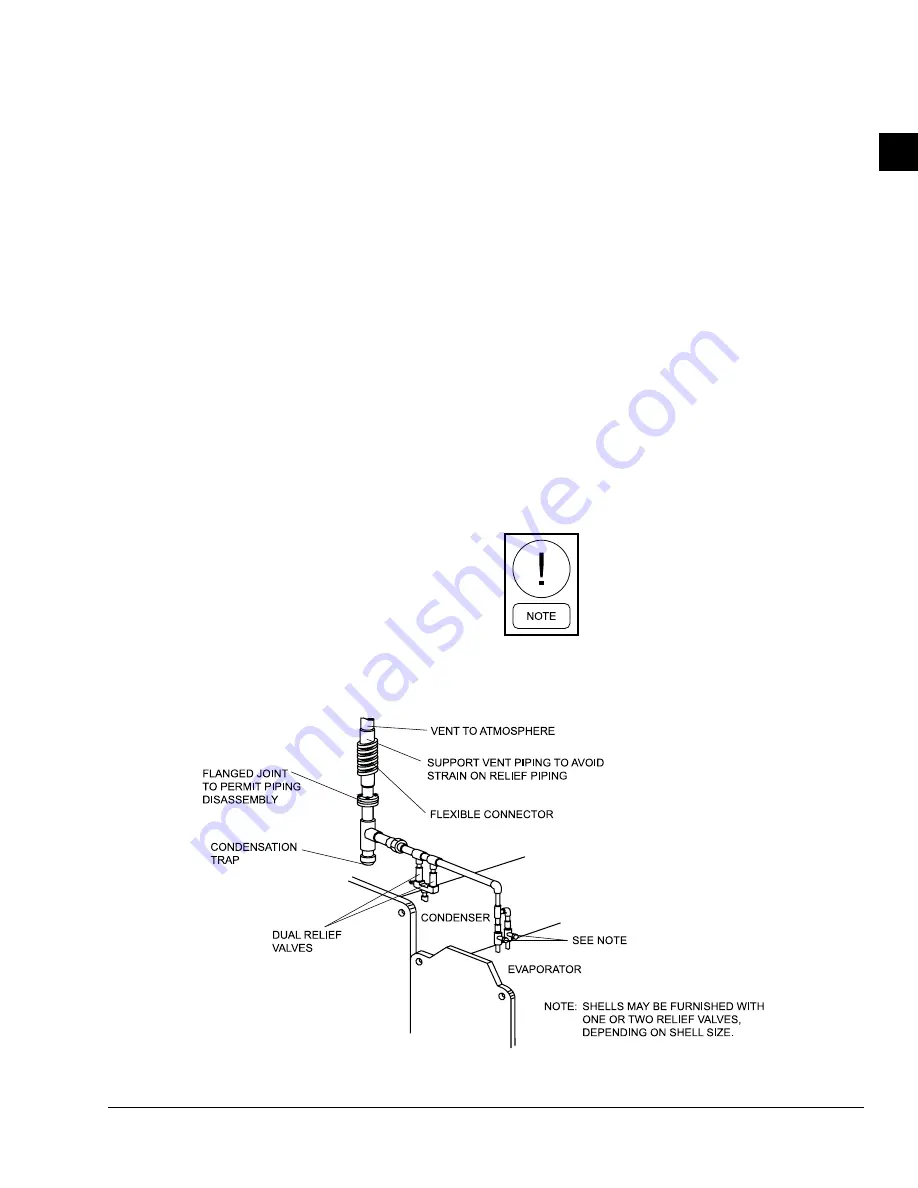
JOHNSON CONTROLS
19
SECTION 2 - INSTALLATION
FORM 160.78-N1
ISSUE DATE: 5/30/2012
2
MAKE CONNECTIONS
After the unit is leveled, place wedges and/or shims un-
der each corner to solidly support the unit in this position
while connecting and hanging the piping, adjusting the
connections, and checking for proper alignment.
After the connections are made and insulation is applied,
the unit can be filled with water and checked for leaks.
If spring isolators were installed, final adjustments
can be made to the leveling bolts until the wedges and
shims can be removed. The unit should now be in cor-
rect level position, clear of the floor or foundation and
without any effect from the weight of the piping.
The coolant temperature inside any JCI-supplied liq-
uid-cooled motor starter must be maintained above the
dewpoint temperature in the equipment room to prevent
condensing water vapor inside the starter cabinet. There-
fore, an additional temperature-controlled throttle valve
is needed in the flow path for the starter heat exchanger
to regulate cooling above the equipment room dewpoint
for applications using cooling sources other than evapo-
rative air-exchange methods, such as wells, bodies of
water, and chilled water. The temperature control valve
should be the type to open on increasing drive coolant
temperature, fail-closed, and set for a temperature above
dewpoint. It can be requested as factory-supplied on a
chiller order by special quotation.
Piping Connections
After the unit is leveled (and wedged in place for op-
tional spring isolators) the piping connections may be
made; chilled water, condenser water and refrigerant
relief. The piping should be arranged with offsets for
flexibility, and adequately supported and braced inde-
pendently of the unit to avoid strain on the unit and vi-
bration transmission (refer to
Figure 7
). Hangers must
allow for alignment of pipe. Isolators (by others) in the
piping and hangers are highly desirable, and may be re-
quired by specifications, in order to effectively utilize
the vibration isolation characteristics of the vibration
isolation mounts of the unit.
Check for piping alignment – Upon completion of pip-
ing, a connection in each line as close to the unit as
possible should be opened, by removing the flange
bolts or coupling and checked for piping alignment. If
any of the bolts are bound in their holes, or if the con-
nection springs are out of alignment, the misalignment
must be corrected by properly supporting the piping or
by applying heat to anneal the pipe.
If the piping is annealed to relieve stress,
the inside of the pipe must be cleaned of
scale before it is finally bolted in place.
FIGURE 7 -
TYPICAL REFRIGERANT VENT PIPING
LD03863
















































